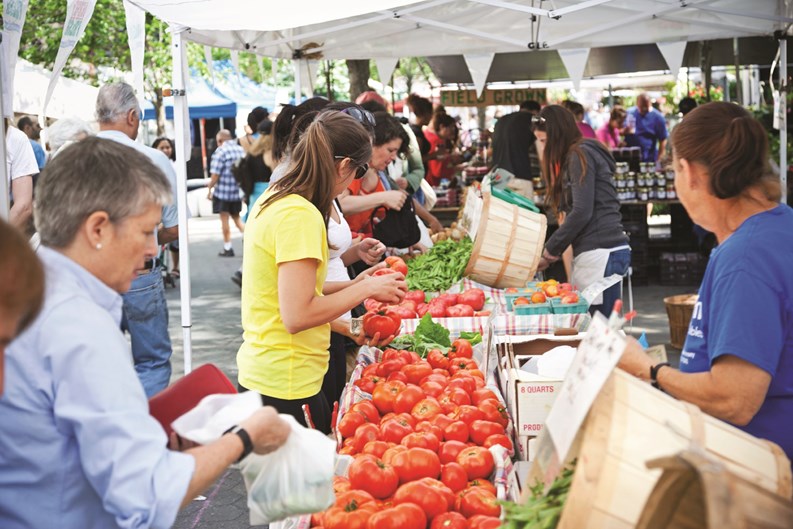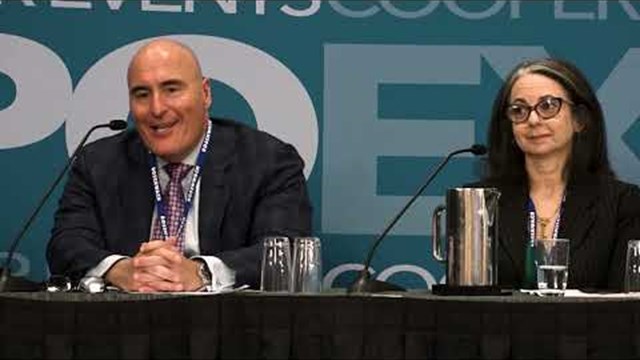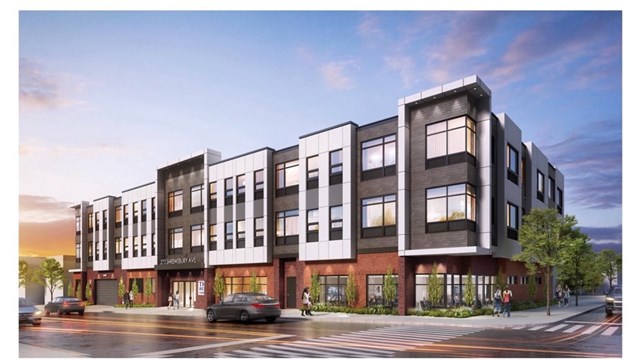According to the June 2014 US census, New York City—the largest, most populous city in the United States—is home to roughly 8.5 million people, and a record-breaking 56 million folks stopped in just to visit last year alone. The Big Apple is of course home to the world’s two largest stock exchanges, Broadway theater, world-renowned educational and medical centers, spectacular museums, sprawling parks, a dizzying array of restaurants to suit any palate, and the epicenter of fashion and shopping!
But sometimes when you live in the city and juggle a hectic work/social /family/life schedule, all you really want to do at the end of the day is go home…and stay there! The larger community surrounding your co-op or condo may just serve as a corridor you pass through as you come and go. If your building contains numerous amenities, or shopping, there is even less reason to venture beyond your own doorstep into nearby neighborhoods.
No Man is an Island
Four-hundred years ago, the English poet John Donne penned his famous verse; “No man is an island.” It appears Donne believed that individuals need to be part of humanity beyond their immediate surroundings. But why? What are the benefits to a person, a co-op, or a condominium building to be involved in the activities of the broader community?
And what exactly is the broader community anyway? You may well wonder, “Isn’t my individual building a community? There are other residents, activities, events, and various amenities. What’s missing?”
Like most things, community has a different meaning for different people. The larger community or municipality may be identified geographically as a physical infrastructure of streets, parks and buildings, defined by tangible brick and mortar structures, streets or roads. A sense of community is more often intangible, perhaps even emotional, and much more difficult to define; it can be what makes an address a home, and not just a location. If a sense of community truly has value—real and/or perceived—what is the best way to build a network of support and communication? What steps, if any, should a board take to foster this intangible benefit and help make the connection? Should a property manager play a role in building community awareness? And what can busy residents contribute toward improving the quality of life in the place they call home?
Looking Outward
Steven Greenbaum, the director of property and asset management at Mark Greenberg Real Estate in Lake Success, believes there are tangible benefits in helping a property build a connection with the greater community. At MGRE, Greenbaum encourages boards and homeowners associations to become involved with local politics in the surrounding communities. Attending borough or local town hall meetings makes it possible to keep up with policies and/or new rulings which may directly or indirectly affect your local quality of life.
Greenbaum advises board members to attend not only as board members of an association, but also as residents. These meetings present a chance to meet local politicians, and find out what changes may affect you and/or your property or property value. “When several members of a condo or co-op participate in local meetings it contributes to a show of strength and can help influence important outcomes for your community.” He makes it a point to communicate an area’s representative’s names and numbers for both the city and the state.
Greenbaum has also invited the community in to attend meetings and gatherings at various properties he manages. One particularly successful event took place at a large Manhattan property. Greenbaum invited several local restaurants to set up and participate in a tasting event that encouraged residents to enjoy sampling various specialties, revisit old favorites, and find new and different dishes to share. “This event was definitely a win-win,” says Greenbaum. “The residents discovered new places, and the restaurants attracted new customers.”
In another instance Greenbaum spent some time and effort to let local real estate brokers experience a property he manages. Printed invitations went out, inviting the brokers to an open house and a chance to learn about the property firsthand. The owners were pleased to showcase their properties, and the real estate professionals felt welcomed and appreciated. The open house had a 50-60% participation rate from the local brokers, and Greenbaum says he considers it to be a great success for both the property and the community around it.
Getting the Word Out
Communication is always an important aspect of property management and especially so when an activity or an event is planned. Greenbaum uses a multidisciplinary approach to reach residents that include robo-calls, email blasts, and postings in various in-house locations such as elevators and mail rooms. He also utilizes on-line communications in the buildings that have those systems in place. Other successful events have included block parties, street fairs, and tag sales. “Any community outreach is successful, he states, it helps residents become empowered.”
Keeping It Fun
While most management pros encourage community involvement and interaction between buildings, HOAs and their surrounds, smart planning is vital. Sean Kent, CPCU and vice president of FirstService Insurance Brokers, a subsidiary of FirstService Financial and affiliate of FirstService Residential, encourages boards and associations to take a hard look at any potential risk that may be associated with special community programs and events well before the invitations go out.
“While social events are a great way to develop relationships and promote a sense of community, several factors should be considered throughout the planning process to manage potential risks associated with your event,” says Kent. “Whether it’s a family fun festival, craft fair, cooking contest, sporting event, or musical concert, events like these can bring great fun but also potential turmoil for associations without proper precautions.”
Kent offers the example of a family fun fair, held at an association he's familiar with. At the fair, one of the vendors—who happened to be a unit owner’s relative - provided free samples from his new beef jerky company. When several attendees became severely ill after eating the jerky and sued the association for negligence, it was discovered the vendor had no liability insurance—which the association would have known, had the fair organizers requested proof of coverage from all the participating vendors.
“In this instance if the association had just requested proof of insurance from the vendor, trouble could have been avoided,” explains Kent.
Cover Yourself
“First and foremost, when planning your upcoming events, contact your insurance agent or broker to make them aware of the event and all the details involved,” advises Kent. “Once they determine whether or not the association’s current policies cover the exposure, they can assist in providing a risk mitigation plan, which could include the procurement of a special events insurance policy.”
Kent goes on to explain this particular type of coverage is basically a short-term liability policy that covers events and activities that are typically excluded on an association's annual general liability policy. Excluded risks might include alcohol concessions, athletic activities, amusement rides, music concerts that promote crowd participation or dancing, theatrical performers, or animals. “If your current general liability or package policy can be endorsed to include special event coverage, it can sometimes cost as little as $300 additional premium,” says Kent.
Separate stand-alone special event policies usually require premiums ranging from $500-$2,500, depending on the details surrounding your event. (An ice cream social and mini-concert in the community lounge will likely cost you less than setting up a bounce castle and petting zoo, for example.)
Additionally, these policies are date-specific and tend to restrict coverage to events lasting no more than 10 consecutive days and a policy term or no more than 90 days. A call to your agent to review your building or association's current coverage, and get specifics on additional coverage should be made very early on in any event planning. The pros strongly recommend obtaining a hold harmless provision and an indemnification agreement as part of your special event coverage, and say you should always be sure you receive a certificate of insurance specifying the insurance carrier, corresponding limits, and your associations name listed as an additional insured party.
All of which is to say, “Don’t let insurance get in the way of your next great event,” says Kent. “Plan ahead, call your agent, and follow these simple steps to endure that your association’s activities are not only fun, but also worry-free.”
Community events are a great way to socialize, become acquainted or reacquainted with neighbors, and build a sense of community. There is another world to experience outside of your own building. Don’t miss out; invite the greater community into your world, and visit your own surrounding neighborhoods soon and often to learn ways greater community involvement can serve everyone better.
Anne Childers is a freelance writer and a frequent contributor to The Cooperator.
.










Leave a Comment